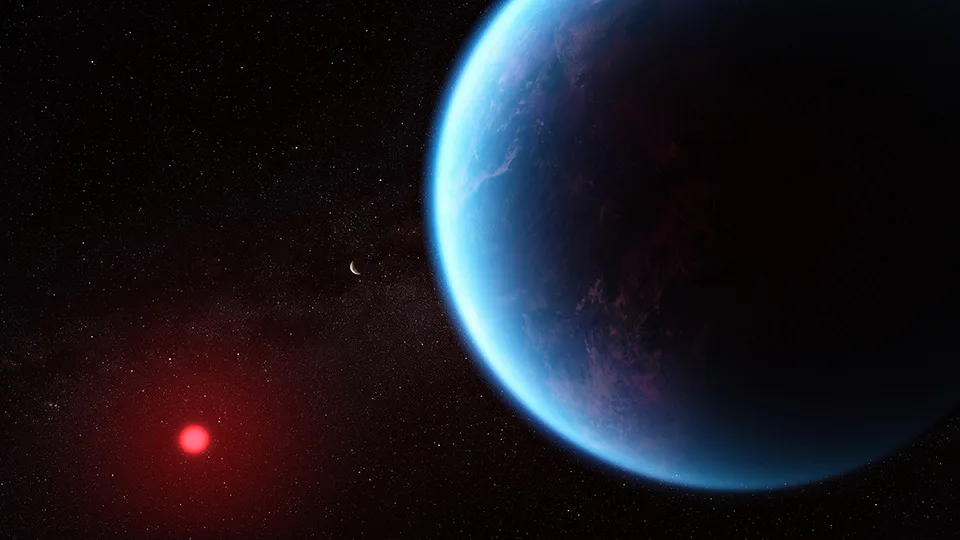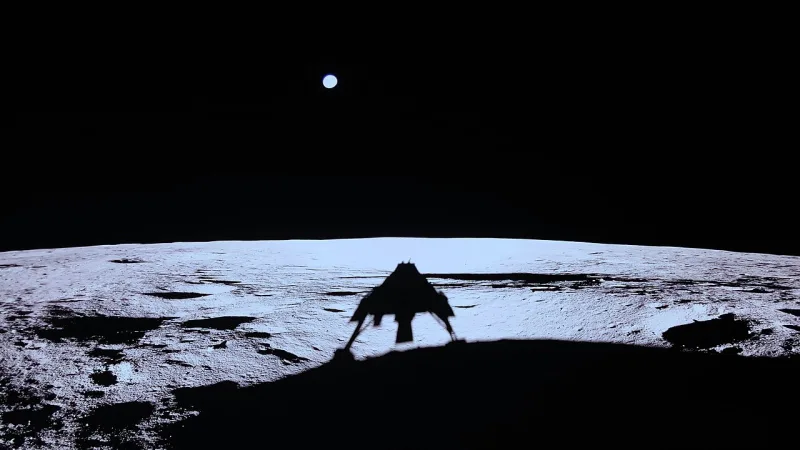K2-18b: Can We Get There Before We’re Gone?

In the vast tapestry of the cosmos, few discoveries have ignited as much intrigue as K2-18b. Located approximately 124 light-years away in the constellation Leo, this exoplanet has recently captured the attention of scientists and dreamers alike. Using the James Webb Space Telescope (JWST), researchers have detected atmospheric signatures of methane, carbon dioxide, and a potential biosignature gas known as dimethyl sulfide (DMS).
On Earth, DMS is predominantly produced by marine phytoplankton, suggesting the tantalizing possibility of biological activity. While these findings are not definitive proof of life, they represent the most compelling evidence to date of potential life beyond our solar system.
How K2-18b Compares to Earth
While Earth remains our only known haven for life, the discovery of K2-18b has ignited imaginations for what lies beyond. Dubbed a “Hycean” world — a potentially ocean-covered planet with a hydrogen-rich atmosphere — K2-18b offers both striking similarities and compelling contrasts to our own blue planet.
K2-18b is approximately 2.6 times Earth’s diameter and 8.6 times its mass, placing it firmly in the category of super-Earths. This means gravity on its surface (if there is one) would be significantly stronger, making every step heavier than on Earth. Yet its most intriguing aspect lies in its atmospheric composition: a blend of hydrogen, methane, carbon dioxide, and possibly dimethyl sulfide (DMS) — a gas associated with life on Earth.
Orbiting a dim red dwarf star in the Leo constellation, K2-18b receives just enough warmth to sit within the habitable zone — the sweet spot where temperatures could allow liquid water to exist. But unlike our Sun, this cooler star demands that the planet orbit much closer, raising questions about stellar radiation and atmospheric retention. Even so, beneath its gaseous layers may lie an ocean world, teeming with unknown possibilities. While it’s not Earth 2.0, K2-18b could be something even more tantalizing: an entirely different recipe for life.
Scenarios for Interstellar Travel
To grasp the enormity of reaching K2-18b, consider that one light-year equals about 9.46 trillion kilometers. At 124 light-years, K2-18b is approximately 1.17 quadrillion kilometers away. Even our fastest spacecraft, like the Parker Solar Probe, which travels at about 700,000 km/h, would take over 1.9 million years to arrive.
Current Propulsion Technologies
With existing chemical propulsion, missions to K2-18b are unfeasible due to the immense travel time. Even nuclear thermal propulsion, which offers higher efficiency, would still require tens of thousands of years.
Breakthrough Starshot and Light Sail Concepts
Initiatives like Breakthrough Starshot propose using powerful lasers to propel light sails to 20% of the speed of light. At this velocity, a probe could reach K2-18b in about 620 years. However, challenges include developing the necessary laser infrastructure, ensuring probe durability, and managing communication over such distances.
Fusion Propulsion
Fusion-powered spacecraft, utilizing reactions similar to those in the sun, could potentially achieve speeds up to 10% of light speed. This would reduce travel time to approximately 1,240 years. While promising, fusion propulsion remains in the experimental stage.
Speed of Light Travel
If humanity could somehow master the ability to travel at the speed of light (299,792 km/s) — the universal speed limit according to Einstein’s theory of relativity — reaching K2-18b would take exactly 124 years from Earth’s reference frame.
However, time dilation would dramatically affect the traveler’s experience. For astronauts moving at light speed (or very close to it), time would pass differently — theoretically, they might perceive only a moment passing, while over a century goes by on Earth. Yet this remains purely theoretical. As of now, accelerating even a single atom to light speed requires infinite energy, making this mode of travel an elusive dream.
Warp Drives and Wormholes
Theoretical models like the Alcubierre warp drive suggest the possibility of faster-than-light travel by distorting spacetime. Similarly, traversable wormholes could, in theory, connect distant points in space. However, these concepts currently lack experimental evidence and face significant scientific and engineering hurdles.
Implications of Discovery
The potential signs of life on K2-18b compel us to ponder profound questions: Are we alone? What forms might extraterrestrial life take? While direct exploration remains out of reach, advancements in telescopic technology and data analysis bring us closer to understanding these distant worlds. Continued observations and studies of exoplanetary atmospheres will be crucial in our quest to find life beyond Earth.
The key takeaway is that …
K2-18b stands as a beacon in our search for extraterrestrial life, challenging our technological limits and expanding our cosmic perspective. The data gleaned from observatories like the JWST is crucial in characterizing exoplanets like K2-18b, offering unprecedented insights into their atmospheres and the potential for habitability. While the journey to this distant world may span millennia with current technology, the pursuit itself, fueled by the discoveries of instruments such as JWST, drives innovation and inspires generations to look to the stars with wonder and determination.
Source(s):
Scientists hail ‘strongest evidence’ so far for life beyond our solar system – The Guardian
What to Know About Scientists Potentially Discovering Hints of Life On A Distant Planet – Times
Webb Discovers Methane, Carbon Dioxide in Atmosphere of K2-18 b – NASA






